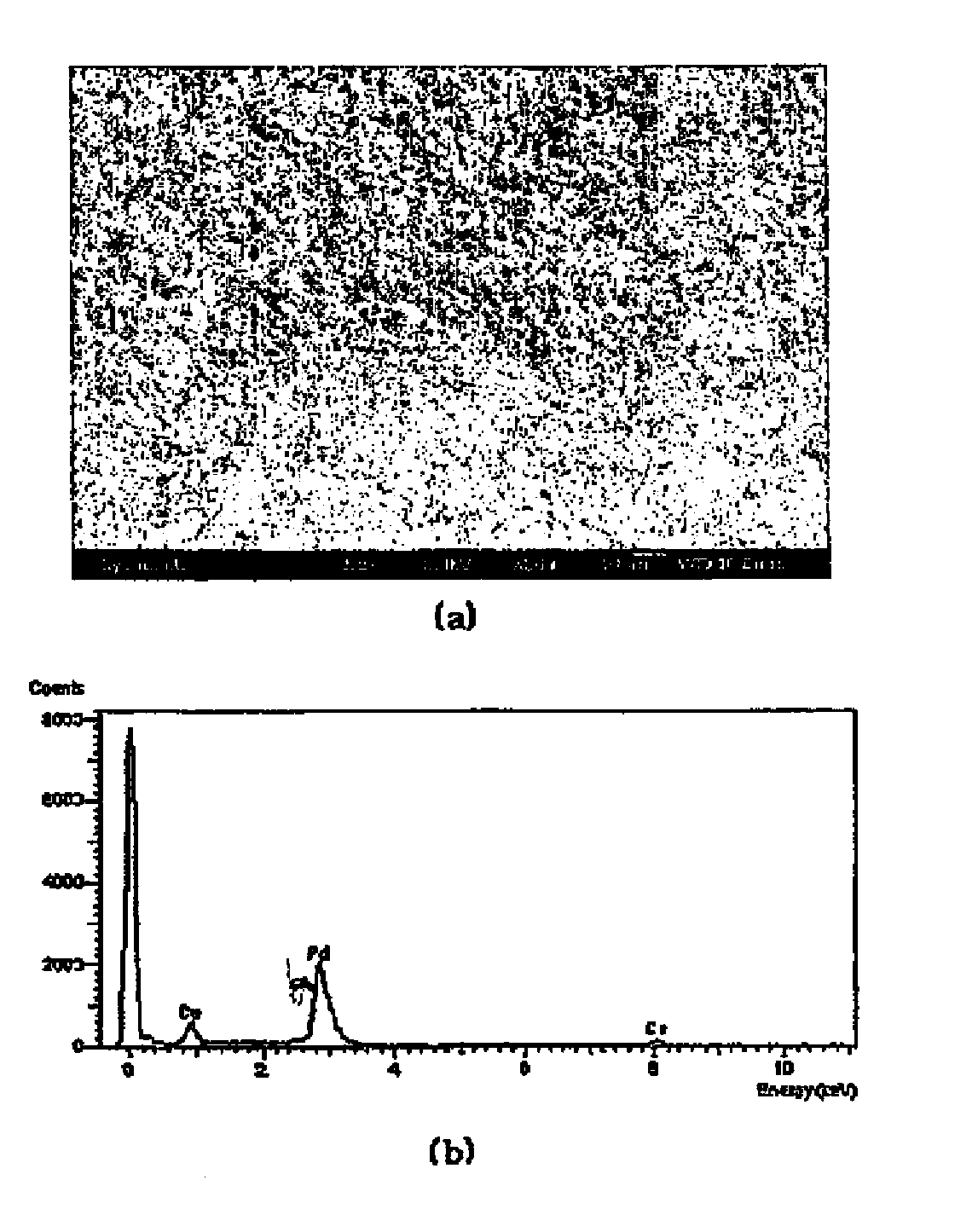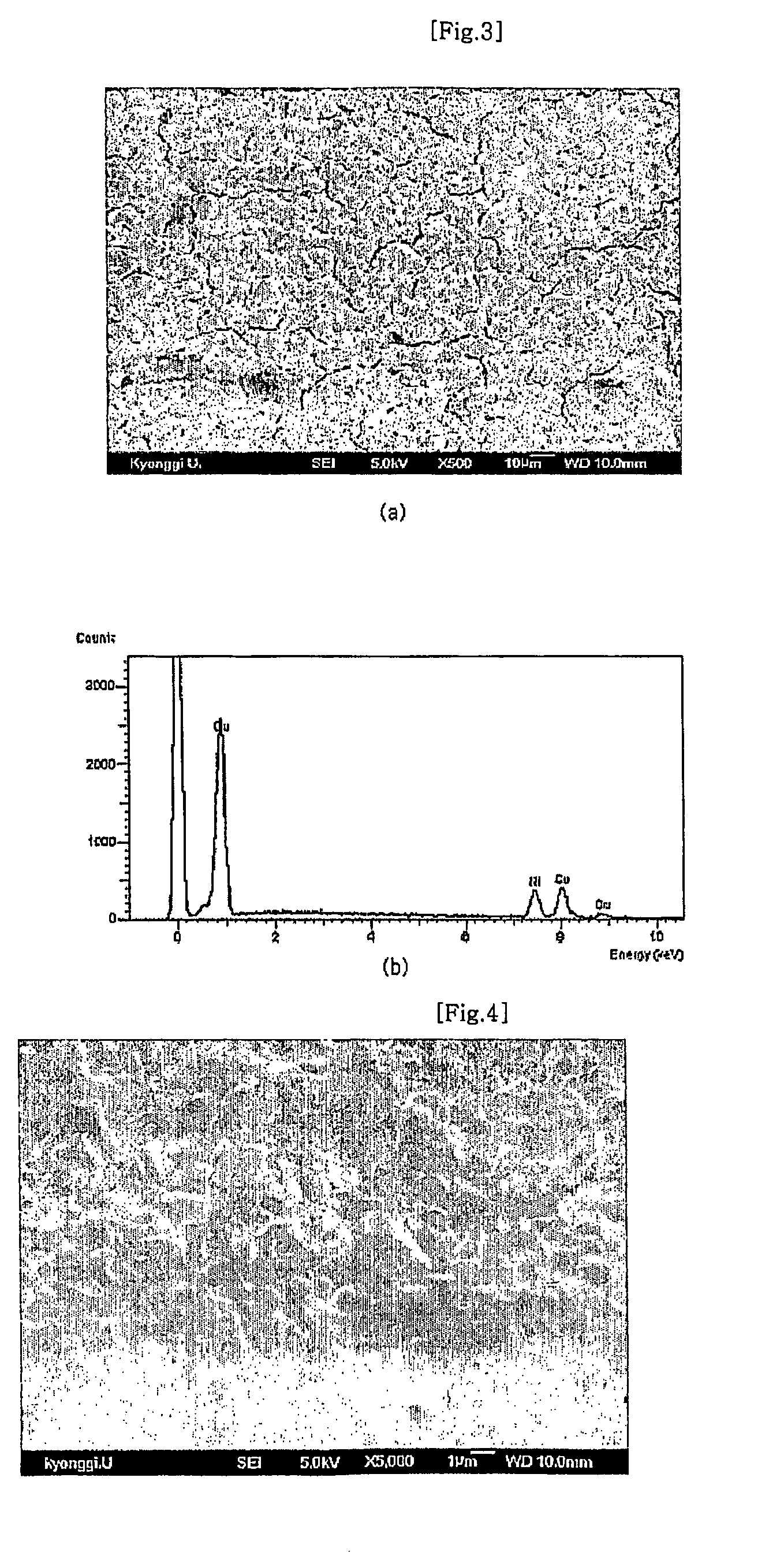Preparation method of palladium alloy composite membrane for hydrogen separation
a technology of palladium alloy and composite membrane, which is applied in the field of preparing a palladium alloy composite membrane for hydrogen separation, can solve the problems of low hydrogen selectivity, poor hydrogen selectivity of palladium-copper alloy membrane, and the inability to prepare a conventional method for palladium-copper alloy membrane, etc., and achieve excellent hydrogen selectivity and high durability. , the effect of improving the properties of the hydrogen separation membran
- Summary
- Abstract
- Description
- Claims
- Application Information
AI Technical Summary
Benefits of technology
Problems solved by technology
Method used
Image
Examples
example
[0055]A porous nickel support was surface treated using hydrogen plasma. The surface treatment using hydrogen plasma was carried out under conditions of RF power of 100 W, an amount of hydrogen of 40 sccm, a process pressure of 50 mTorr, and a period of time of 5 min. Subsequently, in order to fill the surface pores of the support, a nickel electroplating process was performed on the surface treated support at room temperature and a current density of 1 A / dm2 for a plating time of 2 min using a nickel chloride plating solution. After the nickel electroplating process, the support was dried in a vacuum drying oven at 60° C., and then maintained at 200° C. in a vacuum atmosphere of 10−3 torr for 1 hr to remove dust and impurities from the inside of the support.
[0056]The support was further subjected to hydrogen plasma treatment and then palladium electroplating using a palladium chloride solution under conditions of a current density of 10 mA / dm2, a plating time of 20 min, and a plati...
PUM
| Property | Measurement | Unit |
|---|---|---|
| temperature | aaaaa | aaaaa |
| temperature | aaaaa | aaaaa |
| temperature | aaaaa | aaaaa |
Abstract
Description
Claims
Application Information
 Login to View More
Login to View More - R&D
- Intellectual Property
- Life Sciences
- Materials
- Tech Scout
- Unparalleled Data Quality
- Higher Quality Content
- 60% Fewer Hallucinations
Browse by: Latest US Patents, China's latest patents, Technical Efficacy Thesaurus, Application Domain, Technology Topic, Popular Technical Reports.
© 2025 PatSnap. All rights reserved.Legal|Privacy policy|Modern Slavery Act Transparency Statement|Sitemap|About US| Contact US: help@patsnap.com



